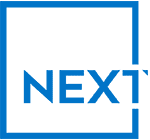Explore our collection of articles, guides, and insights in the category. Whether you're looking for in-depth analysis, expert opinions, or practical advice, our -tagged content covers a wide range of topics to inform, educate, and inspire.
5 Ways to Create Immersive Pop-Up Displays
Do you want to create an immersive experience for your exhibition, event or shop-front to…...
Read More
6 Creative Trade Show Displays to Inspire You
Attracting prospects and event attendees with an engaging trade show booth or trade show display…...
Read More
Creative Easter Display Ideas to Boost Retail Sales
Vibrant, joyous days away from school all filled to the brim with chocolate treats. It…...
Read More
CeraVe with PIM Group | Case Study
Next Printing brought PIM Group's visions to life over two large back-to-back activations for CeraVe…...
Read More
Creating a Visual Impact Without Print
Visual impact is, more than ever, sought after in every marketing execution. An effective visual…...
Read More
Explore NEXT’s Eco-Friendly Brand Strategies with Data-backed Sustainable Displays
Aligning brand values with potential consumers has never been more critical. To win over committed…...
Read More
Features of the Best Event Display Stands: What Makes Them Stand Out?
In today’s competitive commercial landscape, creating immersive brand experiences has become crucial for capturing audience…...
Read More
Valentine’s Day Window Display Ideas For Your Retail Business
Valentine’s Day is a great opportunity to create some inspiring displays that will amaze your…...
Read More
Everything You Need to Know About Re-board
It’s become a favourite in the experience retail marketing space, but what makes Re-board® material…...
Read More
Endless Possibilities with Paper: Crafting Sustainable Floral Displays
Using flowers and foliage to dress a display or take the lead as a centrepiece…...
Read More
Guide to the Best Eco-Friendly Material Alternatives for Signs and Displays
When it comes to brand activation, every last inch of your display matters if you…...
Read More
Unveiling Captivating Christmas Display Ideas for Retail Stores and Experience Marketing
‘Tis almost the season to dazzle and delight! Christmas! As the end of the calendar year draws…...
Read More
